The Ultimate Guide to Finding Filming Locations in LA
What makes a great movie? If you’re talking to anyone other than AFI students, or the folks at Giggster, the answer will probably be a combination of famous actors, a cool story, and a few big explosions. And yet, even though most folks are drawn to things on the billboard – it’s ultimately going to be the smaller production details that serve as the foundation for a film’s success.
A movie is like a Jenga tower. You can survive with a few missing pieces, but pull out too many blocks and the whole project is going to come crashing down. Just like in Jenga, certain ‘pieces’ are more important than others. Things like a quality screenplay provide the weight-bearing ‘blocks’ to build a great project on. Once you’ve got those main blocks figured out, the next thing to focus on are the pieces that determine how the movie looks and feels: the cinematography, the cast, the visual effects, and of course, the filming locations. These elements create the ‘look’ of the film and convince the audience that what they’re watching is real.
1) World Building Starts with a Good Location
Unless you work at Pixar, or your name is Michael Bay, your on-screen universe is going to be built from elements of the real-world. Given this reality, you have three options. Either you can
- empty your financier’s bank-account to construct fancy studio-stages
- hire a location scout to pull out his rolodex
- save some cash and try to find a location on your own
So, pretty much there are no good options. Scouts and stages are expensive and going it alone will likely result in a stress-induced coma.Since we don’t want you like that, we’ll share basic details on the location industry, pros and cons for different types of properties, a survival guide for psycho owners, and of course, tell you how to get the absolute best price on every booking. So before you head out to Van Nuys and start knocking on doors, we'd heavily suggest you to grab your favorite stress-ball, relax for a few minutes, and give this guide a quick read.
Rent a location for your next film or photo shoot project on Giggster – A better way to book locations.
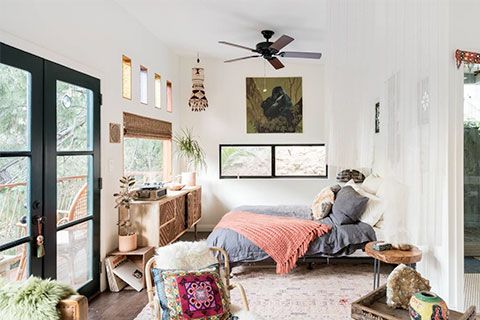
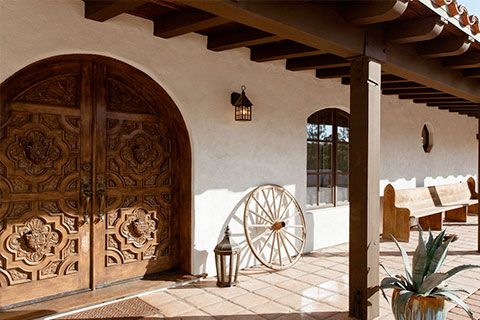
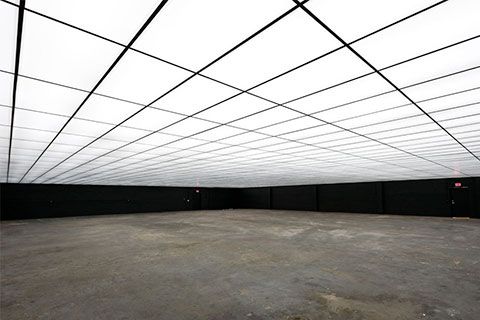
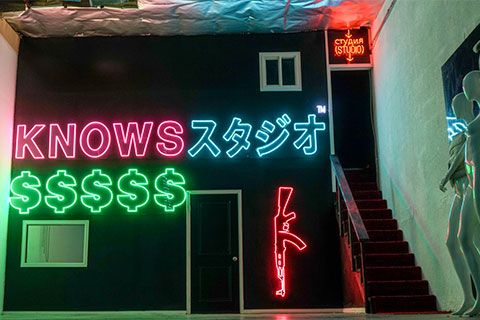
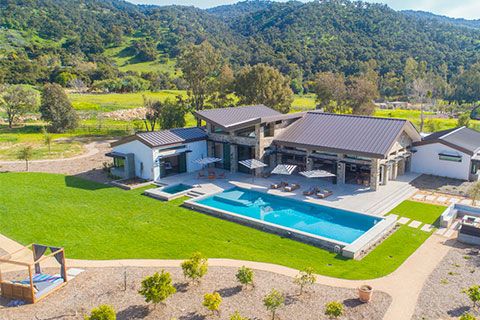
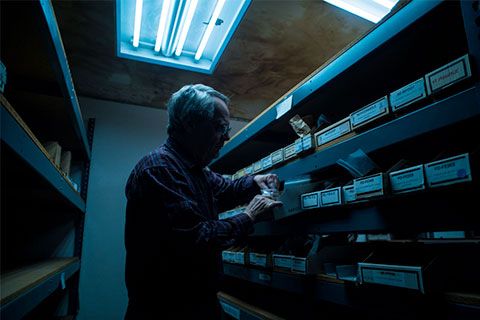
2) Create Your Own Little Vietnam
Stanley Kubrick was famous for his stubborn insistence on shooting his films entirely in the UK. Which, considering the incredible diversity in setting and time-period of his movies (not to mention the fact that he’s from Brooklyn) seems like a strange decision. And yet, when you step inside his films it all seems incredibly real. Locations such as the mountaintop hotel in The Shining, or the glowing streets of Manhattan in Eyes Wide Shut, or war-torn Vietnam in Full Metal Jacket are more than just real places, but important ‘characters’ that shape the entire narrative of his films.
So what’s the lesson? Should you move your entire production to England and never leave? Probably not. A more relevant takeaway from Kubrick’s films is that you don’t need to go to Vietnam to film in Vietnam. To create the ruined city of Hue in Full Metal Jacket, Kubrick used a dockyard in London that was scheduled for demolition. And you know what? It worked. So the next time you’re considering going out-of-country or God forbid, filming in New York, take a breath and think about Stanley Kubrick and Vietnam. Chances are, as long as you have a strong vision, a halfway talented art director, and common sense to pick the right locations, you’ll have everything you need to make your movie work.
Ok, so you’ve got the vision and you’ve got a halfway talented art director. Now you just need some help making the right location picks. We’ve got you covered with an extensive catalog of listings perfect for film rentals in LA. That's not all, just keep scrolling, and you’ll find everything you need to know about different types of locations and the pros and cons of each.
I. Studios vs. The Real World
1. Film Studios
In general, shooting at a studio tends to be more expensive than shooting at real-world locations because you need to build things from scratch. They’re the go-to option for big Hollywood films, particularly those filled with visual effects relying on motion capture and CGI. They’re also popular with scripted television series (think CSI) that need to film in the same setting hundreds of times. These types of projects typically shoot on major studio lots like Fox and Universal with rental costs starting at around $10,000 per day. Studio locations can be further broken down into two categories:
- Backlots – Backlots are the exterior structures situated on the studio’s property that are used for outdoor scenes. Backlots come in all shapes and sizes ranging from residential city blocks and medieval castles to small-town America and the Wild West. While movie magic makes it seem that these settings occupy massive areas, in fact, most backlots are quite small. Universal Studios, which is the largest lot in Los Angeles, only takes up around 0.6 square miles, yet still contains 30 sound stages and 165 separate structures. During Hollywood’s Golden Age from the 1920’s to early 1960’s backlots were the go-to option for almost all major productions. However, with the rise of higher-resolution formats and 4k displays as well as lighter and more transportable rigs, their popularity has faded and largely been replaced by real-world exterior filming locations.
- Sound stages – Sounds stages are secured soundproof structures, buildings or rooms used for recording both sound and images. While studio back lots are out collecting dust, studio sound stages are thriving. The major studios have dozens of them, with Warner Bros. topping the list with 35 separate stages. Beyond the major studios, there are hundreds of smaller independent sound stages in major US cities like Los Angeles, New York and Atlanta. These indie stages range in quality and price, but can often be rented for around $2000 per day. If sound is not particularly important for the scene, you can also rent silent-stages which are typically even less expensive.
Pros of Shooting at a Film Studio
- Great for special effects shooting. Colored cycloramas are generally available at all professional studios.
- Rentable equipment. Don’t have time to rent on Sharegrid? You can pick up most light and sound essentials directly from the studio rental company.
- Everything is close at hand. Need more staff or extra equipment? It’s typically easier to get it at a studio.
- More control over the environment. Traffic noise, lawnmowers, air-conditioning and angry neighbors are hard to predict and adapt to with on-location shoots.
2. Real Locations
Real-world locations are the meat and potatoes of the film industry. If you want to know why they are cool, just go watch some American classics. Easy Rider, The Graduate, Midnight Cowboy, Raging Bull, Taxi Driver, and Annie Hallare defined by their gritty realism and bold artistic vision. You know what else they have in common? They’re filmed almost entirely on location. If you’re looking to add your film to this list and create something timeless and authentic, you’ll need to step out into the real world.
Pros of Shooting in at Real Locations
- Low price. This doesn’t apply to all locations, but there are a lot of great deals out there.
- Better sound for outdoor scenes. If you need to shoot a scene with some specific sounds like wind, ocean, traffic etc. authentic outdoor locations are your best pick.
- More realistic settings. With on-location shoots, you will only need to make minor changes, like adding furniture or re-painting the walls. If you’re really lucky, no alterations will be required, and you can just set up the equipment and start filming.
The main thing to ask when planning the locations and studio requirements for your film is simply: Will it be easier or harder to film in the real thing? If you’re shooting a scene that takes place inside a church, chances are it’s going to be easier to shoot on-location. Churches are huge, filled with expensive and ornate fixtures and furniture, and have unique acoustics. Building one on a soundstage would be hell. On the other hand, if you’re shooting a scene that takes place inside a 747 jet, your life is going to be a lot easier if you just find a stage pre-built for this exact purpose (yes, airplane stages are a thing).
II. Types of Filming Locations
1. Interior Locations
Interior filming locations, ranging from luxurious homes to oppressive office spaces, are extremely valuable when it comes to communicating a film’s prevailing themes as well as the personality and lifestyle of the characters. Sociopathic bachelors live in minimalistic condos, relatable working-class families live in eclectic suburban homes and drug kingpins live in Spanish style mansions with oversized pools. A good interior filming location should be more than just a stage for your characters to play on and instead serve as an extension of a character’s costume, framing our expectation of their role by providing visual cues of where and how they live.
Here is our summary of which types of interior locations are best to shoot on location:
- Residential – Condos, houses, and mansions are well suited for shooting on location. This is especially true for high-end homes with limited interior action. If you’re planning on blowing things up or staying a while, go with a studio.
- Hospitality – Hotel and motel interiors are easy to build from scratch but also affordable and highly available on the locations market. In most cases, your best bet is to film at the real thing.
- Industrial – Garages, warehouses, and industrial properties are typically large, complex, and filled with elements of urban decay. Thanks to the modern economy abandoned industrial space is widely available and inexpensive, so you’re definitely going to want to film on location.
- Healthcare Buildings – Permitting for filming in hospitals or mental health institutions can be tricky and tends to be expensive overall. Small clinics provide a solid alternative choice, but if you need that operating room shot, this is one that may be better to build yourself.
- Office Buildings – Offices are everywhere. Unless you’re producing a decade-long show that takes place in Scranton, Pennsylvania, you may as well film in the real thing.
- Retail – Shopping malls and supermarkets are hard to fake, it’s better to shoot on location – plus it will give you an excuse to visit Cinnabon.
- Restaurants – Diners and roadside cafes have been movie hallmarks for nearly a century. They’re especially popular with visceral filmmakers like the Cohen Brothers and Quentin Tarantino, and they’re almost always shot on location. That said, even dumpy diners usually know their value and can be hard to book for under $3000 per day. Another uniquely-LA option is filming in a ‘real-world’ restaurant that is reserved exclusively for filming purposes.
Regardless of the property you choose, one very important thing to keep in mind regarding interior filming locations is anachronisms. This is something that even the biggest blockbusters are frequently found guilty of. For example, in Gladiator, Ridley Scott’s 2001 Academy Award winner for Best Picture, there are numerous scenes featuring padlocks, a device which only appeared around the middle of the 19th century. Is your film going to be ruined by an errant Starbucks cup? Probably not, but it’s still definitely something to keep in mind when taking your viewers back in time.
2. Exterior Locations
When you’re shooting an outdoor scene, you have two options – you can set up a location on a back lot or shoot somewhere in the real world. As we’ve already mentioned, designing a set in a back lot is costly and tends to look fake. For that reason, almost all exterior scenes are shot on location. In case you haven’t gotten out of your apartment in a while, here are some examples of places you might need to shoot in.
Man-made exterior film locations include:
- Downtown shopping districts
- City streets and squares
- Highways
- Farms and vineyards
- Lighthouses
- Graveyards
- Private and public gardens and parks
When it comes to exterior scenes the big question is not whether you should film on location, but rather, which exterior filming location to use. The use of ‘substitute’ locations is status quo across all media platforms and is definitely where talent in location scouting is most apparent. Due to transportation, legal, time and financial considerations, it is often much more convenient to shoot in a place somewhere other than where the plot is actually set. The vast majority of Hollywood films set in Vietnam were NOT filmed in Vietnam. Apocalypse Now and The Deer Hunter were shot in Thailand, Platoon was shot in The Philippines and Full Metal Jacket was shot in East London. Another good example of substitute location is Prague, which, because of its well-preserved Gothic and Renaissance architecture often serve as a filming location for settings of other European cities, like Medieval Vienna as well as towns in England and Italy.
When shooting outdoors, in addition to keeping an eye out for anachronisms, it is crucial to watch out for other things that are not typical for the movie’s setting but are present at the real filming location. Let’s take Tom Ford’s Nocturnal Animals as an example. The main storyline is set in West Texas. The filming of this part of Nocturnal Animals, however, was shot in California’s Mojave desert, which is home to lots of Joshua trees, a plant which is never found in Texas. The crew had to look for areas without these plants or conceal them, which wasn’t an easy task.
III. Finding the Right Filming Location
In this section, we’ll look at finding locations for particular film genres. We’ll cover three well-known and very distinct categories – horror, western and sci-fi. And we’ll talk about what makes a perfect filming location for each.
Every movie genre has a set of rules: how it should be filmed, the basic story structure, and of course where it all takes place. There are iconic images that pop into our minds whenever we say “western”, “horror” or “sci-fi”, and all of these images are actual filming locations that pretty much define the tone of the picture.
1. The Basics of Shooting on Location
Once you’ve decided to head out and shoot on-location the next thing you’ll want to do is understand some of the things that will make your shoot a success. We’ve put together a few of our favorite “unwritten” rules for choosing a good filming location:
- Check for power supplies – Even some indoor locations can pose power source challenges, not to mention outdoor ones, like a cemetery, where there are no power plugs whatsoever. You need to evaluate how many camera batteries you’ll need and whether an external generator will be necessary/transportable.
- Get parking – This is the simplest and yet one of the most overlooked points in finding your perfect filming location. You don’t want your filming crew to walk half a mile through LA suburbs in the middle of the night after 12 hours of shooting, just because you haven’t thought about parking.
USEFUL TIP
Be creative about your location. The longer you film in a single location – the better. Be always prepared to transform your filming location into something completely different. See how many sets you can get in one area and be creative about it. The magic of Hollywood can transform a church hall into prison hallways, with the right approach, sure you can figure something out.
WARNING
After you’ve made a deal with the owner of the property, you need to keep communicating with them at all times. You have to make sure that he or she is always aware of what’s happening and it was mentioned in the agreement. The last thing you would want is to be in the middle of a scene with the angry owner telling you to get out.
REMEMBER
Almost all regions and municipalities have designated permitting agencies that will help you get the proper permission for filming on-location. It may seem like an annoying or unnecessary hassle, but you should always keep in mind that almost all exterior locations require some form of legal permissions to shoot there. If you are shooting guerilla style, be aware that you CAN be fined and have the police shut your down. This is especially true for outdoor filming and shooting in major cities.
2. Horror Film Locations
Horror movie locations are a well-defined category. In most cases, it’s either a Norman Bates style home, a decrepit farmhouse or cabin, a creepy medical facility, or generic wilderness/campgrounds. These ‘scary’ locations play a critical role in creating an atmosphere of fear. Fortunately, scary usually means run-down and messy which in the world of filming locations, typically also means your location will be cheap. This helps make scary movies very attractive from a financial standpoint. All-time favorites such as The Blair Witch Project, Friday the 13th and The Exorcist were very low budget films that generated tons of cash and an endless onslaught of sequels.
While LA has its fair share of creeps and weirdos, most people wouldn’t really consider it horrifying in the traditional sense. And yet, it’s actually home to many of cinema’s most iconic horror movie locations. If you live in Los Angeles, you’ve probably passed quite a few of them without even knowing it. (see below)
- The creepy haunted house on an Indian burial ground in Poltergeist is actually a normal home in Simi Valley.
- Most of the high school scenes for the original Carrie were shot at Hermosa Beach’s Pier Avenue Junior High.
- A private residence in Topanga Canyon has not only filled in for Camp Crystal Lake in the Friday the 13th series but also in lesser-known horror flicks Pumpkinhead and Ed Gein.
- Numerous Nightmare on Elm Street murder homes are located on tree-lined Hollywood avenues such as Genesee and North Orange Grove.
- The creepy first season of American Horror Story primarily takes place in a very nice 1908 Hollywood Mansion.
Debra Hill, producer and co-writer of John Carpenter’s Halloween
A solid horror movie location is one that helps convey the themes of a movie, and keeps the audience on the edge of their seat. One of the best ways to achieve this effect is limiting the amount of distinct filming locations. Keep the world small, avoid shots with long horizons and vistas. Fill your shots with trees, hedges and anything else that encloses the setting and obscures sightlines. A great beginner trick in the horror genre is to shoot in locations with very narrow spacing to establish a sense of claustrophobia and create the feeling of being trapped.
3. Sci-Fi Locations
The plot of science-fiction movies frequently revolves around space exploration, time travel and futuristic cities which are hard if not impossible to shoot on location. For this reason, sci-fi films tend to shoot on studio sets more often than other genres. While sound stages are the go-to option for creating ‘other-worldly’ locations, real world settings still provide an important piece of the puzzle. For example, the former Hughes Aircraft Hangars in Los Angeles have been used for several science-fiction movies including – James Cameron’s Avatar (2009), Marco Brambilla’s Demolition Man (1993), and Joh Favreau’s Ironman (2008).
“It was medieval meets technology. And medieval meets electronics. And so it was an amazing environment, and that stuck in my mind.”Ridley Scott, director of Blade Runner (1982)
Many of Ridley Scott’s Blade Runner (1982) scenes were also shot in LA. The Pan Am Building, and The Ennis House were both featured prominently in the film and the final scenes featuring Deckard’s fight with the replicant were shot at the Bradbury Building on Broadway in downtown Los Angeles. When working on Blade Runner, director Ridley Scott often visited Hong Kong. In his interview with IGN, Scott said, “So when I was in Hong Kong shooting, it was – Christ, it was medieval, right? It was medieval meets technology. And medieval meets electronics. And they were making everything from cameras to sound stuff and selling it in their boxes and God knows what else… And so it was an amazing environment, and that stuck in my mind. It kind of influenced me in that direction, in terms of what will the populace be in the time that Blade Runner.”
4. Western Locations
In an interview with Marlaine Glicksman, answering the interviewer’s question “Why did you decide to make westerns?”, director Sergio Leone said, “I had never thought of making a western even as I was making it. I think that my films are westerns only in their exterior aspects. Within them are some of my truths, which happily, I see, belong to lots of parts of the world. Not just America. My discussion is one that has gone all the way from Fistful of Dollars through Once Upon a Time in America. But if you look closely at all these films, you find in them the same meanings, the same humor, the same point of view, and, also, the same pains.”
Though ranchers, cowboys, Native Americans, and romanticized gun violence are all typical for westerns, location is the crucial element that breathes life into the picture. The desert landscape, ranches in the middle of nowhere, military forts, saloons and other indispensable attributes of the Wild West – these are the things that really set the western genre apart.
“I had never thought of making a western even as I was making it. I think that my films are westerns only in their exterior aspects. Within them are some of my truths, which happily, I see, belong to lots of parts of the world.”Sergio Leone, Director
If you’ve heard the term ‘Spaghetti Westerns’ you might hazard a guess that it refers to the fact that the films were shot in rural Italy. You’d be wrong, but it’s still a pretty good guess. They’re called Spaghetti Westerns because they were primarily produced and directed by Italians. Interestingly, these western movies were shot in Europe, but the location was Spain, not Italy. More specifically they were shot in Andalucía, in the Tabernas desert, which is geographically reminiscent of the Far West because of its dry climate and gray dusty hills. Masterpieces of the genre such as Sergio Leone’s The Good, the Bad, and The Ugly, A Fistful of Dollars, Once Upon a Time in the West and For a Few Dollars More were shot there.
That said, tons of films were shot in the US, with the vast majority in the outlying areas around Southern California. Alabama Hills, near Mt. Whitney in the Sierra Nevada's, has been a popular filming location for westerns for the past 50 years, hosting films such as William A. Wellman’s Yellow Sky, John Sturges’s The Walking Hills, Bad Day at Black Rock, and more recently Quentin Tarantino’s Django Unchained.
Alabama Hills isn’t the only Western location around Los Angeles. Numerous ranches, rustic houses, homesteads and other properties have served as settings for movies of this genre.
IV. Finding Your First Location
Southern California is the epicenter of motion picture production, both in the United States and worldwide. The decision to set-up shop in Hollywood would come to define the global entertainment landscape, and give birth to legendary studios such as Warner Brothers, Universal, Disney, and Paramount. Today, Southern California is a giant soundstage, with movies being shot around every corner. Thousands of filming locations of all types are available from studio back lots and sound stages to privately owned ranches, mansions, ocean-view condos, and more.
This long history of cinematic awesomeness has made it a rather expensive place to filming, and over the past few decades, the city has surrendered market-share to smaller less-cool markets like Fresno, San Bernardino, and New York. However, according to LA’s Film Commission, the local market is still going strong, with an average of 9,472 shoots days logged during each month of 2017. Interestingly this number was actually 3.5% lower than last year but still represents a 2.7% growth during the last five years. The commission cites the decreases as a result of lowered interest in TV reality, TV pilot and web-based TV projects.
1. Free Filming Locations
Making a quality film with a tiny budget might seem impossible. But it’s been done. A commonly cited example is The Blair Witch project which had a budget of $5 million and made $45 million. Which may be a tiny budget by major studio standards, but is still a pretty massive budget for everyone else. A better example would be Spike Lee‘s She’s Gotta Have It which was made on a budget of $175,000 which made $7,137,502 at the box office. An even better (and more recent) example would be the 2015 Indie flick Tangerine which was made for a measly $100,000. Filming for Tangerine took place in Hollywood on Christmas Eve 2013 and wrapped on January 18, 2014. Sean Baker and Radium Cheung shot the film using three iPhone 5s. The money saved on camera equipment was used to pay for filming locations and to pay extras. The film premiered at Sundance in 2015 and achieved an impressive 97% Fresh Rating on Rotten Tomatoes. It also made a cool $794,000 at the box office which is pretty incredible for a film shot on a cellphone. If you’re looking to imitate this type of success, here are a few tips for stretching your budget just a little bit further.
Start on Facebook
This especially concerns outdoor shooting. There are designated agencies that will help you to fix the location clearance for a film setting. You will need legal permissions to shoot at certain locations, otherwise you can get fined and face other unpleasant consequences.
It never hurts to ask
If you’re low on cash and your friends are being mean you can always try to film on a stranger’s property in exchange for a product placement, special credit or a small role in your film. From our experience, this doesn’t work very often but there are definitely some owners who are open-minded to non-cash trades. Most often, this works if you have a big social media following or are shooting something that will receive major attention or accolades (Two thumbs up from your mom doesn’t count).
Find areas with low-cost permits
Getting permission to shoot an exterior scene can be cumbersome, not to mention costly (see Beverly Hills). It’s always a good idea to search out similar exteriors in smaller neighborhoods and towns, even if that means taking a trip out to Santa Clarita.
While these tips can help you save on your location costs, you shouldn’t expect to be able to get all your locations for free. This is not something to cut corners on. Think back to the indie hit Tangerine, they shot on freaking iPhones just so they could save budget for some cool locations. While this isn’t the only thing that made their film a success, it highlights their focus on storytelling and speaks to the value of filming locations on bringing a narrative to life.
WARNING
Guerilla filmmaking is full of perils and dangers. Not only can you get fined and have your equipment confiscated or stolen, you can get your crew seriously hurt or even killed, as was the case during the 2014 production of the Gregg Allman biopic Midnight Rider. We’re not trying to be a wet blanket on your creative fire. The simple fact is that there are very few relevant or successful films that are shot without a permit or permission. Robert Rodriguez’s El Mariachi is a notable exception which was shot on a budget of $7,000 in the northern Mexican border town. Generally speaking, if your project is halfway decent there will be someone willing to help finance it. If you still decide to film guerilla style, perhaps for a particular scene or two, be careful and do it right. Be considerate and mindful of the people around you. Without a permit, you’re not in charge of the area and cannot tell passers-by to move or quiet down. Don’t block traffic or sidewalks. Try to avoid using tripods as they will attract the attention of the police. Also, try to limit the number of crew and cast members as much as possible and pack lightly.
To learn about film permits in LA, who issues them and the process, read our detailed blog on film permits, rules, and pricing for filming in Los Angeles
2. Start Searching
It takes a lot of work to find a good filming location that fits a specific budget and aligns with other logistics such as property availability and permits. Hopefully, this guide has made the process slightly more clear and given you some fresh ideas on where to get started. If you’re ready to take the next step and get searching, our website Giggster.com is a great place to start. Giggster was built from the ground up, specifically to streamline and modernize the filming location process. Giggster provides the industry’s largest open-access library of film-friendly properties, with 100% transparent pricing and fees. Need a Malibu mansion with ocean views? Or an explosion-friendly warehouse? Or just an affordable photo studio? Giggster’s got you covered, with just about any kind of residential or commercial property you can think of.
Phew! We know this one has been quite the read, but that's exactly how important it is to get your location right. If you're wondering 'how am I supposed to find locations to shoot at', don't worry, we're here to help. Giggster has an extensive collection of film location rentals in LA that you can use for your location scout. From seeing pictures and the features of the space to contacting the owner and making a payment, we're here to help you through all steps of the process.

